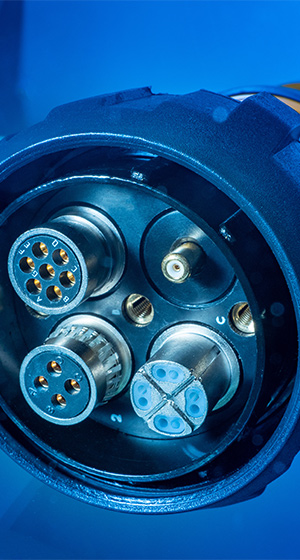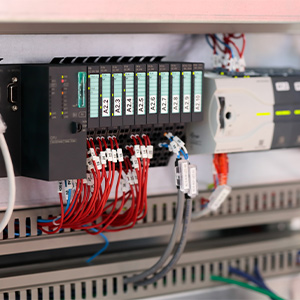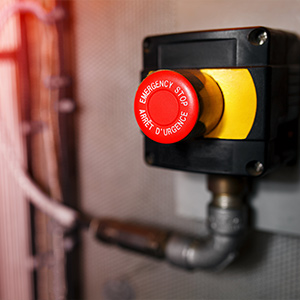Industry 4.0, and the gradual transformation of the factory floor into a smart automation system, involves an increasing number of electrical applications working in unison. These naturally need to be joined to each other to make a unified whole, and this is where choosing the correct connectors can be your most important design decision.

A myriad of modern devices such as switches, sensors, valves, actuators, conveyors and cameras are all used to carry out production, control and monitoring processes, for which they require secure signal connections. Such devices combine a broad spectrum of functions, and need to include features ensuring accuracy and reliability as well as safety and cost efficient operation.
In heavy industrial applications there is the additional risk of excess vibration and mechanical shock, which can cause disturbances in the connector components and result in partial or complete loss of signal. When choosing the correct connector for this kind of application, it is therefore necessary to consider elements that are resistant to vibration, such as mechanical latches, mounting flanges, locking screw threads or set screws, radial O-rings and spring technology. Furthermore, your device might experience EMI (electromechanical interference) from other equipment located nearby, which might cause unreliable signal transmission or complete signal loss. In this event you should choose an end-to-end system of cabling and connectors that will shield the signal and eliminate any possibility of EMI.
Industrial connectors don't usually cater for high-frequency signals, and are designed instead for signal frequencies most commonly used in mainstream industrial processes. Most connectors are therefore rated for 600V, although special models can be designed to handle higher voltages of up to 5kV or conductors that can carry hundreds of amps. Combined system modules can also include air connections, incorporating connectors that can handle air pressures up to 116 psi through a ¼" diameter hose.
In keeping with the general trend of mechanical evolution, size reduction continues to be an important factor, and most modular connectors are found within a range of 3-6" x 2". The ability to construct smaller and smaller components and to increase connector pin counts has also led to a general trend for higher density products in a more compact unit. Most contemporary connectors are therefore now designed in a module that combines functionality with flexibility, saving both on space and installation time. A modular connector could physically accommodate up to 300 wires of 24AWG gauge, or 216 wires of 14AWG, but this is an exceedingly rare occurrence. Most applications will be using connectors handling from 4-50 connections for electrical conductors of 22WG or larger, and this can lead to some potential for mismated connectors.
To avoid this problem, design engineers using a signal connectivity interface can choose circular connectors that employ coded keying patterns. This will eliminate confusion when multiple connectors coded with the same landing footprint are being installed in a single device. A signal connectivity design scheme might include circular connectors that have alphabetical keying variations, such as X or Y, S or T and A, B, C. Different keying patterns can also be used in terminal block connectors to make sure that only the right plug is mated with the right socket, and some schemes employ colour coding as a simplified form of identification.
Design engineers will have to take into consideration every aspect of the automation system when choosing the correct connectors, including such factors as the environment where the connectors are installed, what method of installation is used, and appropriate safety requirements. Additional factors such as the density of the connector assembly and maintaining signal integrity will have to be reviewed, but whatever your automation system requires, there'll be a connector just right for the job.




